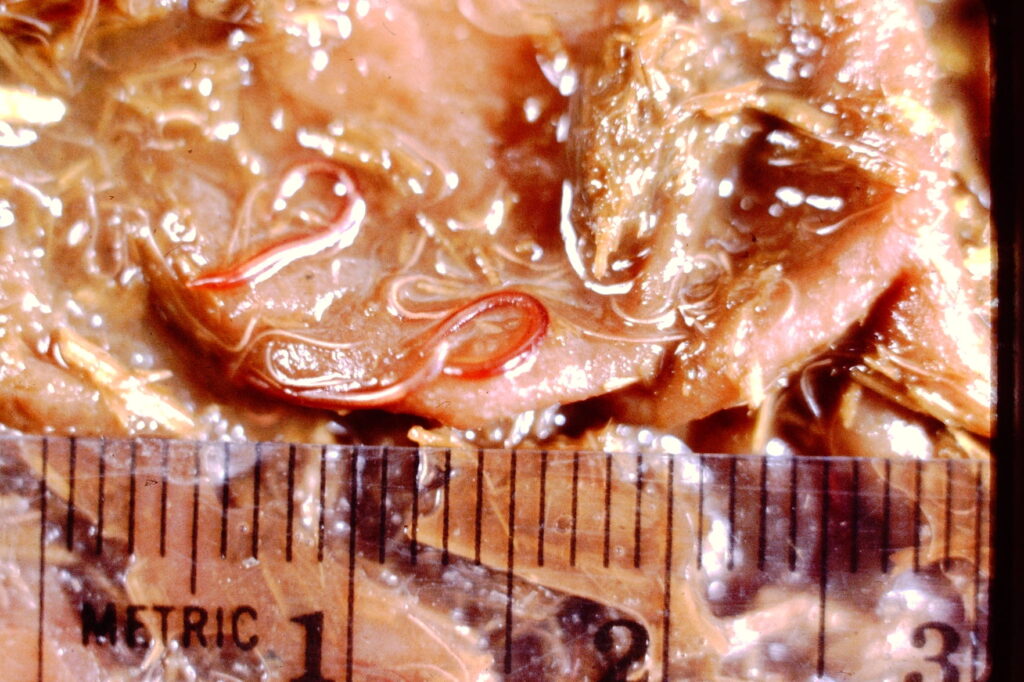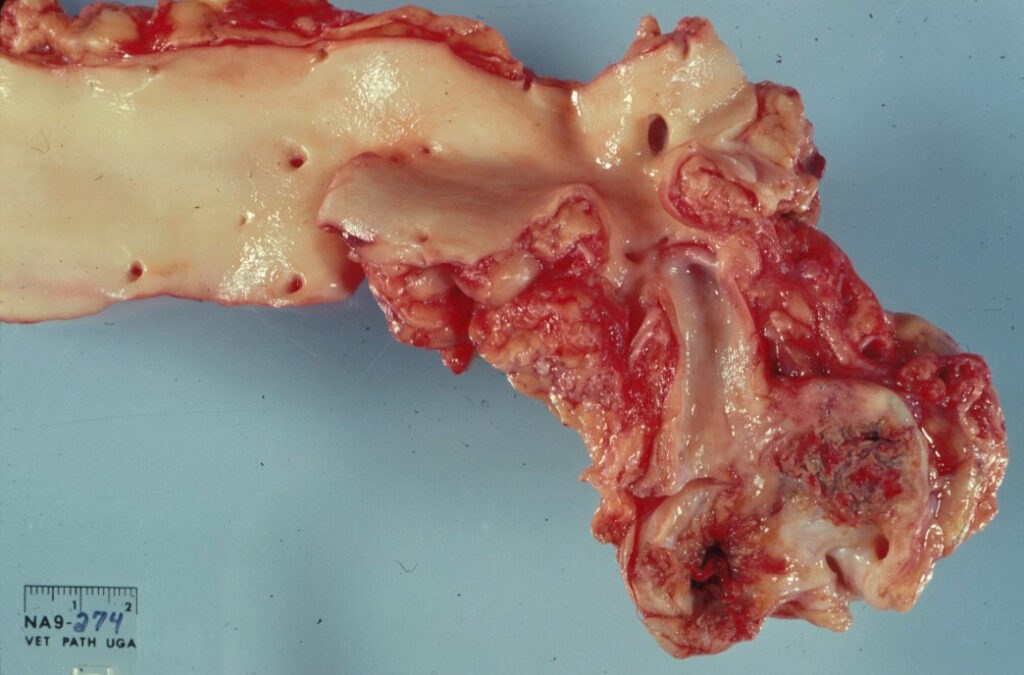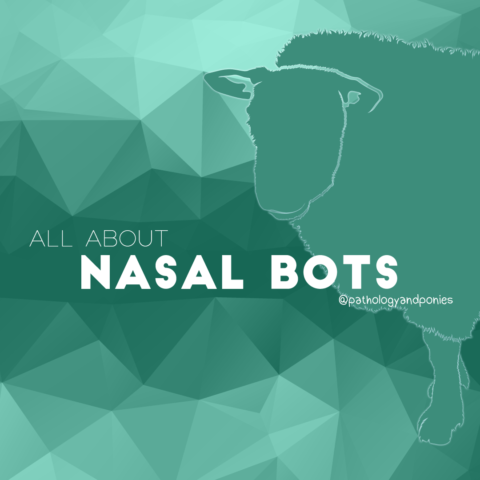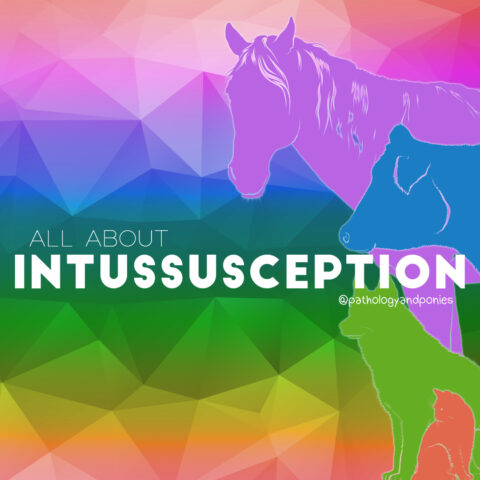Today’s path rounds are on 𝐥𝐚𝐫𝐠𝐞 𝐬𝐭𝐫𝐨𝐧𝐠𝐲𝐥𝐞𝐬!
𝐖𝐡𝐚𝐭 𝐢𝐬 𝐢𝐭?
𝐋𝐚𝐫𝐠𝐞 𝐬𝐭𝐫𝐨𝐧𝐠𝐲𝐥𝐞𝐬 are a type of 𝐫𝐨𝐮𝐧𝐝𝐰𝐨𝐫𝐦 that is considered to be one of the most significant parasites affecting horses. These roundworms are typically found in the cecum and colon of the horse.
𝐖𝐡𝐨 𝐠𝐞𝐭𝐬 𝐢𝐭?
Horses get this condition! Any age, breed, or lifestyle of horse can be affected.
𝐖𝐡𝐚𝐭 𝐜𝐚𝐮𝐬𝐞𝐬 𝐢𝐭?
Large strongyles are more scientifically known as 𝐒𝐭𝐫𝐨𝐧𝐠𝐲𝐥𝐮𝐬 𝐯𝐮𝐥𝐠𝐚𝐫𝐢𝐬. Typically, horses ingest the larvae of this parasite while grazing on pasture. From there, the larvae penetrate the intestinal mucosa and enter small arteries. Their main destination is the 𝐜𝐫𝐚𝐧𝐢𝐚𝐥 𝐦𝐞𝐬𝐞𝐧𝐭𝐞𝐫𝐢𝐜 𝐚𝐫𝐭𝐞𝐫𝐲, one of the large vessels that supplies blood to the intestinal tract. Once they reach this artery, they grow and develop over the course of 3-4 months into immature adults. These immature adults swim down the artery back to the cecum or colon of the horse, where they will produce eggs to carry on their life cycle.
𝐖𝐡𝐲 𝐢𝐬 𝐭𝐡𝐢𝐬 𝐚 𝐩𝐫𝐨𝐛𝐥𝐞𝐦?
The adult worms typically don’t cause too many issues, so it’s the larval stages living in the arteries that are the main concern. These larval stages can irritate the artery, and disrupt the normal smooth inner surface of the vessel. This predisposes the artery to 𝐭𝐡𝐫𝐨𝐦𝐛𝐨𝐬𝐢𝐬, because the coagulation factors in the blood will have a roughened surface to attach to! When this happens, a big blood clot can form that blocks blood flow to the intestine. This can lead to 𝐢𝐧𝐟𝐚𝐫𝐜𝐭𝐢𝐨𝐧 (death of tissue) of the intestine, and severe 𝐜𝐨𝐥𝐢𝐜 (intestinal pain).
𝐇𝐨𝐰 𝐢𝐬 𝐢𝐭 𝐝𝐢𝐚𝐠𝐧𝐨𝐬𝐞𝐝?
The parasite can generally be identified on a 𝐟𝐞𝐜𝐚𝐥 𝐞𝐠𝐠 𝐜𝐨𝐮𝐧𝐭, assuming that there are adults producing eggs at the time of fecal collection. However, it is not the adults that cause problems, so it is possible for a horse to be affected by the larval migration without showing any eggs in their feces. In these cases, 𝐞𝐱𝐩𝐥𝐨𝐫𝐚𝐭𝐨𝐫𝐲 𝐥𝐚𝐩𝐚𝐫𝐨𝐭𝐨𝐦𝐲 (surgical exploration of the abdomen) is the best method of diagnosis, to identify infarcted intestine.
𝐇𝐨𝐰 𝐢𝐬 𝐢𝐭 𝐭𝐫𝐞𝐚𝐭𝐞𝐝? 𝐇𝐨𝐰 𝐢𝐬 𝐢𝐭 𝐩𝐫𝐞𝐯𝐞𝐧𝐭𝐞𝐝?
If the horse has infarcted intestine, then surgical removal of the affected tissue is the best means of treatment. Otherwise, treatment and prevention involves using anti-parasitic medications like 𝐢𝐯𝐞𝐫𝐦𝐞𝐜𝐭𝐢𝐧 or 𝐦𝐨𝐱𝐢𝐝𝐞𝐜𝐭𝐢𝐧 to kill off the larvae and adults. Good pasture and manure management can also help prevent this worm from spreading!
𝐏𝐡𝐨𝐭𝐨𝐬
1-3) Worms chillin’ in the colon and cecum of horses.
4-5) Irritated, roughened cranial mesenteric arteries after larval migration.
6) Some very sad, hemorrhagic and black intestine after cranial mesenteric thrombosis.
𝐒𝐨𝐮𝐫𝐜𝐞𝐬
Maxie, G. Jubb, Kennedy and Palmer’s Pathology of Domestic Animals, Volume 2. Sixth Edition.
Photos 1-6 © Noah’s Arkive contributors Tyler, Boosinger/Chang, Crowell, Acland licensed under CC BY-SA 4.0.










